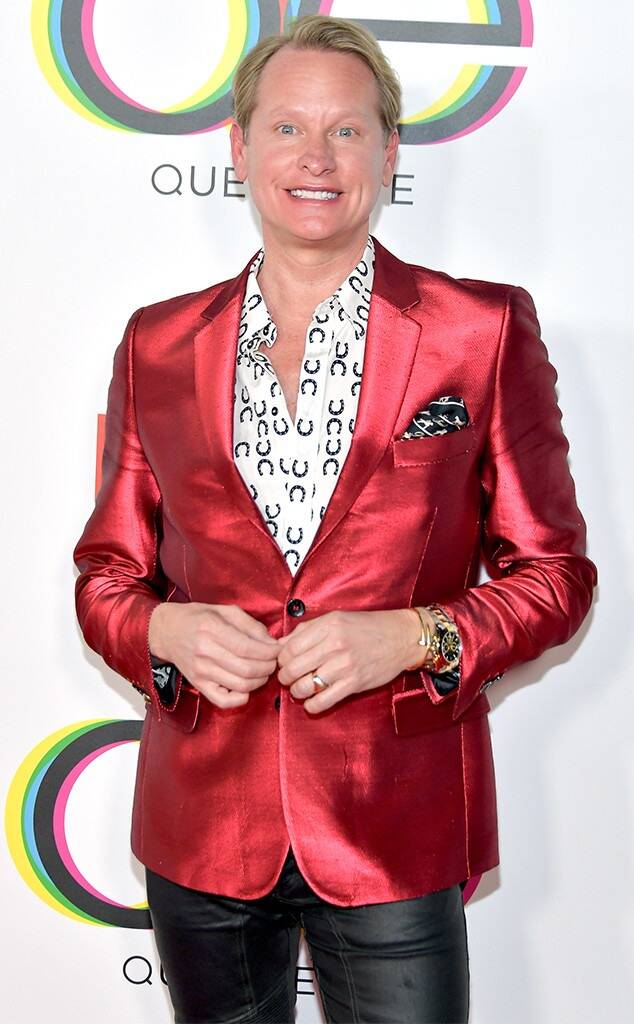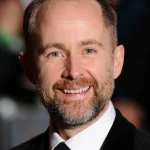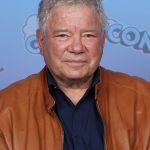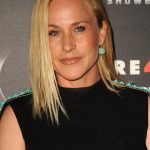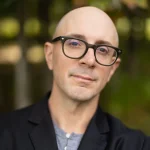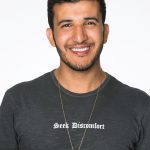Carson Kressley: Fashion Authority and Television Pioneer in LGBTQ+ Representation
Carson Kressley has established himself as one of America’s most recognizable fashion experts and television personalities, combining style knowledge with an effervescent personality that has made him a fixture in American popular culture for two decades. From his breakthrough role on “Queer Eye for the Straight Guy” to his continued presence across media platforms, Kressley has helped transform the landscape of fashion expertise on television while simultaneously advancing LGBTQ+ visibility in mainstream entertainment.
Early Life and Formative Experiences
Born on November 11, 1969, in Allentown, Pennsylvania, Kressley grew up in the nearby rural community of Orefield, where his family owned and operated a pony farm. This upbringing in Pennsylvania’s Lehigh Valley—a region known for its traditional values and agricultural heritage—provided an unlikely foundation for someone who would later become synonymous with metropolitan style and fashion expertise.
Kressley’s early fascination with horses became a significant aspect of his pre-television life, laying the groundwork for what would become a lifelong passion for equestrian competitions. This interest provided both a creative outlet and competitive arena where his natural enthusiasm and attention to detail could flourish outside mainstream sports.
“Growing up around horses gave me a unique education in presentation and aesthetics that most people wouldn’t associate with rural Pennsylvania,” Kressley explained in a 2018 interview. “In equestrian competitions, particularly in showmanship classes, there’s tremendous emphasis on precision, presentation, and creating visual impact—principles that translate directly to fashion coordination.”
These early experiences with competitive horse showing introduced Kressley to concepts of presentation, styling, and judgmental scrutiny that would later inform his professional approach to fashion. The discipline required in preparing horses for competition developed his eye for detail and understanding of how small adjustments could create significant visual impact—skills that would become central to his later career.
Academically talented and socially adept despite growing up in an environment where his differences might have created challenges, Kressley excelled in school while developing the quick wit and humor that would later become his trademark on television. Friends and teachers from this period recall his ability to navigate potential social obstacles through charm and intelligence—adaptive skills that would serve him well in his later career transitions.
Educational Path and Early Professional Development
Kressley’s educational choices reflected both practical consideration and creative interest, leading him to Gettysburg College where he pursued a dual focus in finance and fine art. This combination—balancing business acumen with aesthetic sensibility—foreshadowed the commercial creativity that would characterize his later career.
At Gettysburg, Kressley was active in campus life, participating in the college’s equestrian team while building a reputation for his distinctive personal style in an environment not known for fashion experimentation. Professors noted his ability to excel academically while maintaining a strong extracurricular presence—time management skills that would benefit his multifaceted career.
Upon graduation in 1991, Kressley faced the pivotal decision confronting many with creative inclinations: whether to pursue a conventional career path or take the greater risk of following artistic passions. His initial choice steered toward the practical, beginning his professional life in financial services before the pull toward fashion became irresistible.
This transition led Kressley to Ralph Lauren, where he secured a position in 1994 that would provide the professional foundation for his subsequent fashion career. Over eight years at the iconic American brand, he rose through various styling and creative positions, developing both technical fashion knowledge and an understanding of the aspirational imagery that drives the industry.
“Working at Ralph Lauren was essentially getting paid to attend the most exclusive fashion graduate program in the world,” Kressley later reflected. “I learned not just about clothing construction and fabric quality, but about creating comprehensive visual narratives around style—skills that became invaluable in television where you’re communicating complex fashion concepts to audiences with varying levels of interest and knowledge.”
His responsibilities at Ralph Lauren included work on advertising campaigns, runway presentations, and editorial styling—experiences that built his technical credentials while developing the confident visual voice that would later distinguish his television approach. Colleagues from this period recall Kressley’s exceptional ability to translate high fashion concepts into accessible guidance, foreshadowing his later role as a fashion interpreter for mainstream audiences.
“Queer Eye” Breakthrough and Cultural Impact
The pivotal moment in Kressley’s career came in 2003 when he was cast as the fashion expert in Bravo’s groundbreaking reality series “Queer Eye for the Straight Guy.” The show’s premise—five gay men providing lifestyle makeovers to heterosexual men—represented a significant departure from previous television treatments of LGBTQ+ individuals, positioning gay men as authorities rather than comedic stereotypes or narrative problems to be solved.
Kressley’s selection for the “Fab Five” came through a serendipitous connection when a former colleague recommended him to producers seeking authentic experts rather than actors. His audition immediately stood out for combining legitimate fashion credentials with natural on-camera charisma and quick humor—qualities that couldn’t be manufactured through traditional casting processes.
When “Queer Eye” premiered in July 2003, it achieved both immediate ratings success and cultural significance that transcended typical reality programming. The show arrived at a pivotal moment in American social evolution regarding LGBTQ+ acceptance, offering millions of viewers their first sustained exposure to gay men presented as multidimensional individuals with valuable expertise rather than one-dimensional stereotypes.
Within this groundbreaking ensemble, Kressley quickly emerged as the breakout personality due to his distinctive combination of fashion authority and uninhibited enthusiasm. His approach to styling—emphasizing accessible advice delivered with humor rather than intimidating fashion dictates—resonated particularly with viewers unaccustomed to fashion guidance.
“What Carson brought to television was revolutionary in its straightforwardness,” noted television critic James Poniewozik. “He could tell someone their clothing choices were disastrous while simultaneously making them feel good about the transformation process. That’s an extraordinary communication skill that completely changed how fashion expertise was presented on television.”
The cultural impact of “Queer Eye” extended far beyond typical television influence, with academic analysts noting its contribution to normalizing LGBTQ+ presence in American households during a period when same-sex marriage remained illegal in most states and military service by openly gay individuals was prohibited under “Don’t Ask, Don’t Tell” policies.
Media scholar Katherine Montgomery observed: “Shows like ‘Queer Eye’ functioned as cultural diplomacy, introducing LGBTQ+ individuals into living rooms where viewers might have limited real-world interaction with openly gay people. The show’s emphasis on shared human experiences—wanting to look better, improve living spaces, connect with loved ones—created relatable bridges across identity differences.”
For Kressley personally, the show’s success brought unprecedented opportunities and visibility. The original series ran for five seasons, winning an Emmy Award for Outstanding Reality Program in 2004 and transforming its hosts from unknown experts to household names. By the show’s conclusion in 2007, Kressley had established himself as a distinctive television personality whose appeal transcended the show’s original premise.
Expanding Horizons in Television and Media
Following “Queer Eye,” Kressley leveraged his newfound recognition to build a diverse media career that has demonstrated remarkable longevity in an industry known for fleeting visibility. Rather than being defined exclusively by his breakthrough role, he has continuously evolved his television presence while maintaining his distinctive personality.
This evolution began with hosting opportunities that expanded beyond fashion-specific content to broader lifestyle programming. Shows like “How to Look Good Naked” on Lifetime (2008) and “Carson Nation” on OWN (2011) allowed Kressley to develop formats that centered on his strength in building connections with participants while delivering substantive lifestyle guidance.
“How to Look Good Naked” particularly demonstrated Kressley’s ability to address deeper issues beneath style choices, focusing on body acceptance and self-esteem rather than simple clothing selection. This approach revealed his understanding that fashion advice, when delivered thoughtfully, could address psychological well-being beyond mere appearance—a perspective that distinguished his work from superficial makeover programming.
Kressley’s adaptability in television formats has been particularly evident in his successful transition to judging and competition programs. His recurring role as a judge on “RuPaul’s Drag Race” since 2015 has introduced him to younger audiences while allowing him to apply his fashion expertise to the specialized aesthetic of drag performance. Similarly, his participation as a contestant on shows like “Dancing with the Stars” (2011) and “Celebrity Apprentice” (2012) demonstrated his willingness to engage from both sides of the competition format.
Beyond hosting and competition roles, Kressley has maintained a steady presence as a fashion commentator and red carpet analyst for networks including ABC, E!, and the TV Guide Channel. These appearances have solidified his status as a trusted fashion authority while providing platforms for his distinctive humorous commentary on celebrity style.
Underlying this diverse television presence has been Kressley’s consistent ability to connect with audiences through authenticity and humor—qualities that have made him a welcome presence across varying formats and channels. Unlike many reality personalities whose appeal diminishes after initial exposure, Kressley has demonstrated remarkable staying power by adapting to television’s evolving landscape while maintaining his core appeal.
Literary Career and Brand Expansion
Complementing his television work, Kressley has established a successful literary career with books that translate his fashion philosophy to print. His first book, “Off the Cuff: The Essential Style Guide for Men and the Women Who Love Them” (2004), directly extended his “Queer Eye” role by providing comprehensive style guidance for men with varying fashion interest levels.
Subsequent books including “You’re Different and That’s Super” (2005), an illustrated children’s book about embracing individuality, and “Does This Book Make My Butt Look Big?: A Cheeky Guide to Feeling Sexier in Your Own Skin” (2016), demonstrated his range beyond technical fashion guidance to address self-acceptance and personal confidence—themes consistent with his broader public message.
These literary projects reflect Kressley’s understanding of his brand essence: approachable expertise delivered with humor and empathy. Whether addressing men unfamiliar with fashion fundamentals or women struggling with body image issues, his written voice maintains the same conversational quality and encouraging perspective that characterized his television breakthrough.
Beyond publishing, Kressley has developed product lines that extend his fashion guidance to direct consumer offerings. His collaborations have included collections with QVC, emphasizing affordable, versatile pieces designed to work for diverse body types and lifestyle needs. These products reflect his practical approach to style—focusing on accessible solutions rather than aspirational high fashion that would contradict his inclusive message.
This brand extension has been characterized by careful selection of partners whose values align with Kressley’s emphasis on inclusivity and accessibility. Unlike celebrities who attach their names to multiple product categories with limited personal involvement, his collaborations have maintained clear connections to his core expertise and personal style philosophy.
Advocacy and Cultural Influence
Throughout his public career, Kressley has leveraged his visibility to advocate for LGBTQ+ acceptance, representation, and rights. This advocacy has taken multiple forms, from participation in formal organizations to the implicit representation his career itself provides.
His involvement with GLAAD (formerly the Gay & Lesbian Alliance Against Defamation) has included both fundraising support and utilizing his media platform to promote the organization’s mission of ensuring fair, accurate representations of LGBTQ+ individuals across media. Similarly, his work with The Trevor Project has supported crisis intervention and suicide prevention efforts for LGBTQ+ youth facing challenges similar to those he navigated in his own youth.
Beyond formal organizational support, Kressley’s greatest advocacy impact may be the representation his career itself provides. By achieving mainstream success and acceptance while being openly gay from the beginning of his public life, he has provided a visible example of LGBTQ+ professional achievement that remains significant despite evolving social attitudes.
“When I started on television, the landscape for openly gay personalities was drastically different,” Kressley noted in a 2020 interview reflecting on his career’s historical context. “Today’s younger LGBTQ+ people might not fully appreciate how recently it was considered commercially risky to have gay hosts on mainstream television. The fact that seems unimaginable now represents real progress that I’m proud to have contributed to in some small way.”
Media analysts have noted the significance of Kressley’s specific representation: a gay man whose personality includes stereotypically gay-coded qualities like fashion expertise and flamboyant expression, but who presents these characteristics as assets rather than limitations. This unapologetic authenticity challenged earlier media requirements that LGBTQ+ figures downplay difference to achieve acceptance.
“What made Carson’s presence particularly significant was his refusal to minimize typically gay-associated qualities to make straight audiences comfortable,” observed media critic Steven Capsuto. “Earlier LGBTQ+ television personalities often felt pressure to present more normative personalities to gain acceptance. Kressley’s success while being unabashedly himself helped expand the range of LGBTQ+ expression considered commercially viable on television.”
This representative impact extends to Kressley’s consistent message about self-acceptance and authentic expression—themes that resonate beyond LGBTQ+ audiences to anyone feeling marginalized for perceived differences. This broader applicability has allowed his advocacy to reach audiences who might not engage with explicitly political LGBTQ+ content.
Equestrian Accomplishments and Personal Passions
Parallel to his media career, Kressley has maintained his lifelong involvement with equestrian sports, competing at championship levels in competitive horse showing. This continued connection to his pre-fame passion provides both personal fulfillment and a distinctive dimension to his public identity beyond fashion and television.
His competitive focus has centered on American Saddlebred horses, a breed known for its elegant movement and showmanship qualities. In this specialized discipline, Kressley has achieved remarkable success, including world championship titles that reflect genuine competitive accomplishment rather than celebrity accommodation.
The American Saddlebred Horse Association recognized his contributions to the breed by inducting him into their Hall of Fame—an acknowledgment of both his competitive achievements and his role in bringing attention to this specialized equestrian discipline through his celebrity platform.
Beyond competition, Kressley has advocated for equestrian accessibility through involvement with therapeutic riding programs and organizations seeking to introduce diverse participants to horse activities traditionally associated with privilege. This advocacy reflects his understanding of how formative his own equestrian experiences were despite growing up outside typical equestrian demographics.
This continuing equestrian involvement provides Kressley with a world separate from entertainment industry pressures—a space where achievement depends on objective performance standards rather than popularity measures. Friends have noted how this alternative focus has provided balance throughout his public career, offering perspective during both professional successes and challenges.
“The horses don’t care if your last show was a ratings hit or if your book made the bestseller list,” Kressley once explained. “There’s something grounding about an activity where your celebrity means nothing compared to your actual skill and preparation. I think that’s kept me sane throughout some pretty crazy career experiences.”
This equestrian connection also links Kressley to his pre-fame identity and regional origins, providing continuity between his rural Pennsylvania childhood and his current life as an entertainment figure. This integration of seemingly disparate life components reflects a personal wholeness that contradicts the fragmentation often experienced by those achieving sudden fame.
Personal Style and Public Authenticity
Throughout his career, Kressley has maintained a distinctive personal style that embodies his fashion philosophy while providing a visual signature immediately recognizable to audiences. This style—characterized by bold color choices, pattern mixing, and classic tailoring with playful elements—functions as both personal expression and professional branding.
Fashion historians have noted how Kressley’s personal aesthetic draws from multiple traditions: the precise tailoring and quality focus of his Ralph Lauren background, the expressive color and pattern play of queer fashion history, and the showmanship elements derived from his equestrian background. This distinctive synthesis creates a visual presentation that feels simultaneously polished and spontaneous.
Beyond specific clothing choices, Kressley’s broader approach to self-presentation has emphasized authenticity and joy—qualities that distinguished him from fashion authorities whose personas projected exclusivity or judgment. This approachable authenticity established the foundation for his enduring appeal across demographic groups not typically engaged with fashion expertise.
“What Carson brought to fashion television was revolutionary precisely because it contradicted the industry’s historical emphasis on exclusivity,” noted fashion historian Dr. Valerie Steele. “Traditional fashion authorities often derived their credibility from creating distance between themselves and average consumers. Carson instead created connection through shared enthusiasm and accessible guidance, fundamentally shifting how fashion expertise could be communicated.”
This authentic approach extends to Kressley’s candor about his own insecurities and style journey—openness that creates identification with audiences navigating similar challenges. Unlike fashion experts who present perfected personas, he has consistently acknowledged his own struggles with body image and confidence, creating permission for viewers to engage with fashion despite similar concerns.
“I never wanted to be the fashion expert who made people feel worse about themselves,” Kressley explained when discussing his communication philosophy. “The fashion industry has enough voices creating insecurity to sell products. I wanted to use fashion as a tool for helping people feel better in their own skin rather than making them feel inadequate if they didn’t match some unrealistic standard.”
This perspective has distinguished Kressley’s career approach from many fashion industry figures, positioning him as an advocate for democratic style accessibility rather than exclusionary fashion gatekeeping. This philosophical stance—that fashion should serve individual expression rather than conformity to external standards—represents perhaps his most significant contribution to fashion communication.
Legacy and Continuing Influence
As Kressley continues his multifaceted career, his legacy encompasses several distinct contributions that have shaped contemporary media and fashion communication. Television historians recognize his pivotal role in the evolution of LGBTQ+ representation, bridging earlier limited portrayals and today’s more diverse inclusion.
“Shows like ‘Queer Eye’ with personalities like Carson created a crucial transitional moment in television history,” noted media scholar Robert Thompson. “They helped viewers become comfortable with openly gay individuals in their living rooms during a period when such representation remained controversial. That comfort created cultural conditions that made possible the more diverse LGBTQ+ representation we see today.”
Within fashion media specifically, Kressley helped pioneer a more democratic, accessible approach to style guidance that has influenced countless subsequent fashion communicators. By demonstrating that expertise could be delivered without condescension or exclusivity, he helped transform how fashion advice is communicated across platforms.
Fashion editor Teri Agins observed: “Before Carson, fashion television often mimicked the intimidating tone of high-fashion magazines. His approach—using humor, empathy, and genuine enthusiasm—created a template for how fashion guidance could be both substantive and approachable. That influence is evident across today’s fashion content landscape.”
Perhaps most significantly, Kressley has demonstrated remarkable career longevity in an industry known for disposable celebrity. By continuously evolving his professional focus while maintaining consistent personal authenticity, he has navigated the transition from breakthrough personality to enduring media presence—a trajectory achieved by few reality television pioneers.
This sustained relevance reflects both strategic career management and genuine audience connection built on values that transcend specific programs or formats. Whether judging drag performances, providing red carpet commentary, or competing on celebrity reality shows, Kressley has maintained a consistent essence that audiences recognize and welcome across contexts.
As newer generations discover Kressley through his contemporary work rather than his breakthrough role, his influence continues evolving beyond the specific cultural moment that first brought him to prominence. This ongoing relevance speaks to the timelessness of his core appeal: authentic enthusiasm, accessible expertise, and unabashed individuality expressed with humor and heart.
In a media landscape where fashion guidance often still defaults to exclusion or intimidation, Kressley’s enduring message—that style should enhance rather than diminish individual confidence—remains both commercially successful and culturally significant. By consistently championing self-expression through personal style while acknowledging the emotional complexities of appearance, he continues advancing a fashion philosophy that prioritizes joy and authenticity over conformity and insecurity.
This legacy—combining entertainment value with genuine positive impact—distinguishes Kressley from many fashion personalities whose influence remains confined to aesthetic trends. By integrating style guidance with broader messages about self-acceptance and authentic expression, he has elevated fashion communication from mere clothing advice to a vehicle for personal empowerment—a contribution that extends far beyond the specific television moment that first introduced him to American audiences.

